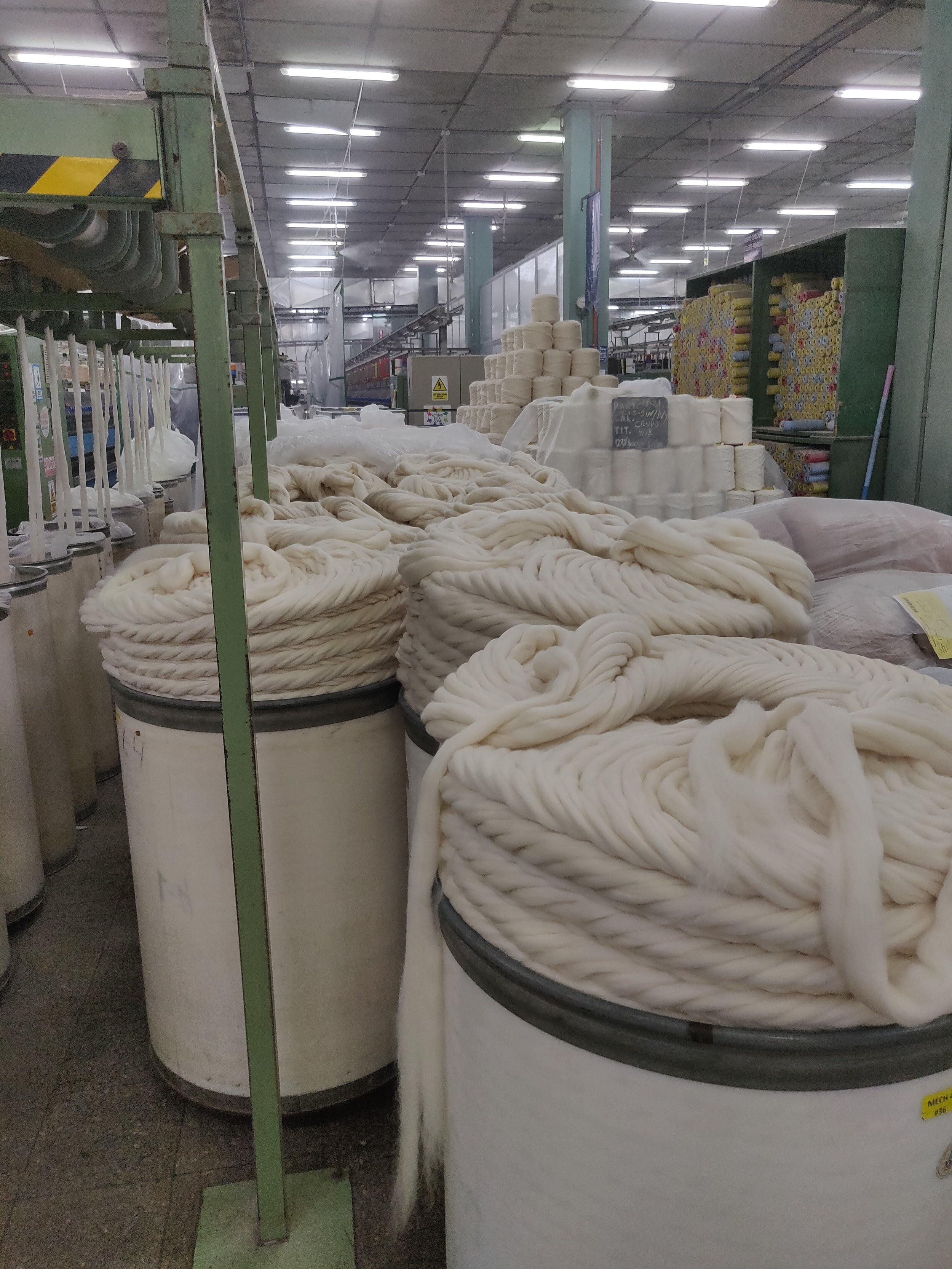Shearing takes place once a year and fleeces collected, these go to be sorted. The fibre arrives in sacks ready for unpacking and sorting.
The sorting is a highly skilled job, the fleeces are sorted for their natural colour (around 22 natural for alpaca) and micron (how fine it is), this is generally done by women because they are considered to have a better ability to distinguish the micron than men. This picture below shows the fleeces being sorted into different microns, sometimes with just 1 micron difference!
Below, the fleeces are being sorted into colour, these sometimes then get blended to make other natural colours, or are used on their own.
This is naturally black alpaca, we blend this down with cream alpaca to get our naturally grey Angel yarn.
Once the fleeces have been sorted, they get washed, as you can imagine, they are pretty dusty and dirty. They get popped into what is sort of like a very big gentle washing machine:
The fleece then gets air dried.
Now it’s dry, it needs to be opened up ready for coming into sliver and tops, this is done by putting it through a roller which teases the fleece apart.
Now the fibres need to be aligned, this starts with making a sliver as below:
The sliver then gets made into tops, and the resulting noils (short pieces) come out the bottom, these get used for mattresses, bedding and futons, nothing gets wasted.
The fibre goes from tops into pencil roving, the thickness of the pencil roving depends on how thick the yarn is going to be made, so the thinner the yarn, the thinner the pencil roving.







